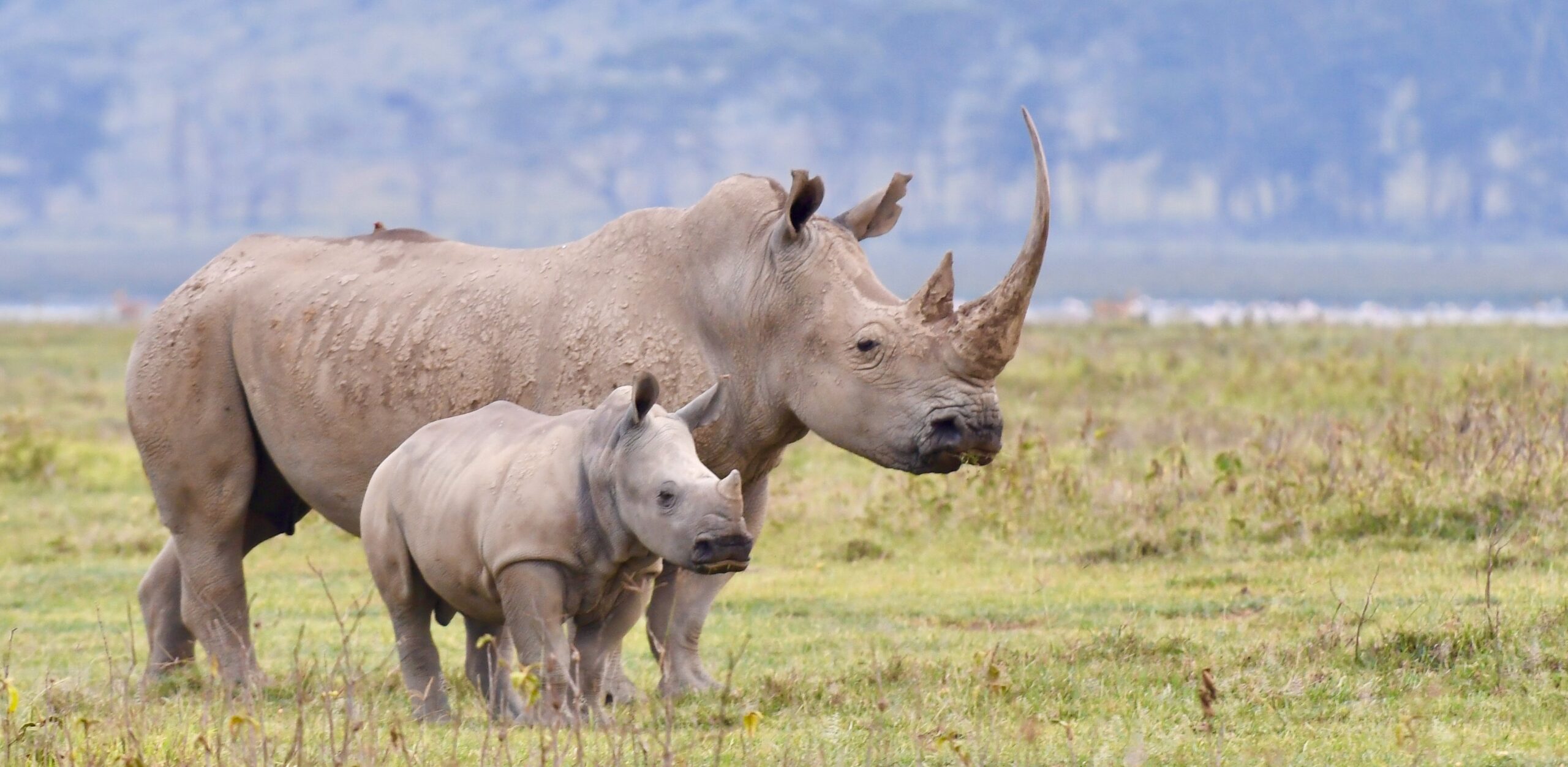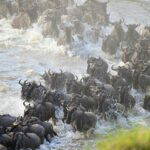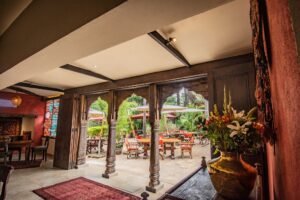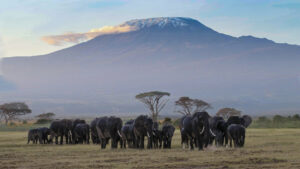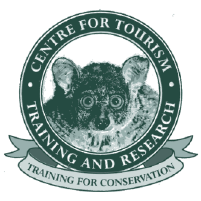There are a lot of amazing sites to visit in Kenya if you want to have your own African experience. The country is recognized for its exquisite rustic environment and cultural sophistication, as well as its rich history and abundant natural beauty. In actuality, Kenya might just be Africa’s best-kept tourism secret. Kenya is a lovely place to visit because of the intriguing areas that are revered for their beauty and offer unmatched opportunities to unwind and relax in African style.
If you are eager for your own African experience, there are plenty of fascinating places to explore in Kenya. The country is steeped in history, lauded with bountiful natural beauty, and renowned for refining its rustic ambiance and cultural elegance. As a matter of fact, Kenya may simply be the best-kept travel secret in Africa. The fascinating places are treasured for their beauty, and they offer unequaled opportunities to unwind and relax in African style; thus, making Kenya a beautiful country to visit.
1. The Great Wildebeest Migration in Maasai Mara
One of Africa’s most stunning game reserves is the Maasai Mara National Reserve (commonly known as “Maasai Mara”). The Serengeti’s northern extension, the Mara, borders Tanzania and creates a wildlife corridor between the two nations.
It is named for the statuesque Maasai tribe, who have lived in the area for millennia and still graze their animals here while wearing red cloaks. Maa, which in their language means “mottled,” may be a reference to the way the acacia trees and cloud-covered skies cast light and shadow on the broad plains.
Video Link: https://www.youtube.com/watch?v=25JCPBvh8B0
The park is well-known for the Great Migration, which occurs from July to October and involves millions of wildebeest, zebra, and Thomson’s gazelles moving toward and away from the Serengeti.
Numerous hippos and crocodiles lurk in the Mara River. Due to its relatively significant populations of lion, cheetah, and leopard, the park is also renowned for offering exceptional predator sightings, particularly during the dry months of December through February. Because of the park’s elevation, the climate is pleasant and moderate all year long.
2. View the Largest Mammals and Kilimanjaro at Amboseli
Crowned by Mount Kilimanjaro, Africa’s highest peak, Amboseli National Park is one of Kenya’s most popular tourist parks. The name “Amboseli” comes from a Maasai word meaning “salty dust,” an apt description for the park’s parched conditions.
The park is one of the best places in Africa to view large herds of elephants up close. Other wildlife commonly spotted in the park includes big cats, such as lion and cheetah, as well as giraffe, impala, eland, waterbuck, gazelle, and more than 600 species of birds.
Video Link: https://www.youtube.com/watch?v=i8xvdrGp_aM
Nature lovers can explore five different habitats here, ranging from the dried-up bed of Lake Amboseli to wetlands with sulfur springs, savannah, and woodlands. Look for the local Maasai people who live in the area around the park.
Accommodation: Ol Tukai, Kibo Safari Camp, Elewana Tortilis Camp, Amboseli Serena Safari Lodge, Kibo Villa Amboseli, Little Amanya Camp, Kilima Safari, Camp,
3. Red Elephants of Tsavo
Kenya’s largest park, Tsavo, is sliced in two: Tsavo West and Tsavo East. Together these parks comprise four percent of the country’s total area and encompass rivers, waterfalls, savannah, volcanic hills, a massive lava-rock plateau, and an impressive diversity of wildlife.
Midway between Nairobi and Mombasa, Tsavo East is famous for photo-worthy sightings of large elephant herds rolling and bathing in red dust. The palm-fringed Galana River twists through the park, providing excellent game viewing and a lush counterpoint to the arid plains.
Other highlights here include the Yatta Plateau, the world’s longest lava flow; Mudanda Rock; and the Lugard Falls, which spill into rapids and crocodile-filled pools.
Tsavo West is wetter and topographically more varied, with some of the most beautiful scenery in the northern reaches of the park. Highlights here are Mzima Springs, a series of natural springs with large populations of hippos and crocodiles; Chaimu Crater, a great spot for seeing birds of prey; and Ngulia Rhino Sanctuary.
Wildlife is not as easy to see in Tsavo West because of the denser vegetation, but the beautiful scenery more than compensates.
Accommodation: (Tsavo West) Ngulia Safari Lodge, Finch Hattons, Severin Safari Camp, Kilaguni Serena Safari Lodge, Voyager Ziwani Tented Camp. (Tsavo East) Ashnil Aruba, Voi Wildlife Lodge, Satao Tented Camp, Sentrim Loyk Tsavo Camp, Kulalu Camp
4. Special Five at Samburu
On the banks of the palm-lined Ewaso Nyiro River, Samburu, Buffalo Springs, and Shaba Reserves lie in an arid region in the remote north of Kenya. Shaba National Reserve is one of two areas where George and Joy Adamson raised Elsa the lioness, made famous in the film Born Free.
The wildlife in all three reserves depends on the waters of the river to survive, and many species are specially adapted to the parched conditions. These include Grevy’s zebras; Somali ostriches; and gerenuks, the long-necked antelope that stand on two rear legs to reach the fresh shoots on upper tree limbs, the Reticulated giraffe, and the Beisa Oryx.
A top attraction in Samburu National Reserve is the Sarara Singing Wells, local watering holes where Samburu warriors sing traditional songs while hauling water for their cattle to drink. You might also be rewarded with sightings of big cats and wild dogs.
Accommodation: Samburu Sopa Lodge, Ashnil Samburu, Simba Lodge, Sentrim Camp, Intrepids Camp, Elephant Watch, Samburu Game Lodge, Elephant Bedroom, Larsen’s Camp
5. Lake Nakuru Rhino Heaven
Lake Nakuru National Park, in Central Kenya, is famous for its huge flocks of pink flamingos. The birds throng on Lake Nakuru itself, one of the Rift Valley soda lakes that covers almost a third of the park’s area.
Video Link: https://www.youtube.com/watch?v=XWSo_meYq2U
The park was established in 1961, and more than 450 species of birds have been recorded here, as well as a rich diversity of other wildlife. Lions, leopards, warthogs, waterbucks, pythons, and white rhinos are just some of the animals you might see, and the landscapes range from sweeping grasslands bordering the lake to rocky cliffs and woodland.
The park also protects the largest euphorbia candelabrum forest in Africa. These tall, branching succulents are endemic to the region and provide a bold textural element to the arid landscapes.
Accommodation: L. Nakuru Sopa Lodge, Sarova Lion Hill, L. Nakuru Lodge,
Video Link: https://www.youtube.com/watch?v=mbH3HDoWKBo
6. Lamu – Kenya’s Oldest Town Island
The small island of Lamu, northeast of Mombasa, oozes old-world charm. A UNESCO World Heritage Site, Lamu Old Town is Kenya’s oldest continually inhabited settlement, with origins dating back to the 12th century.
Strolling the labyrinthine streets is one of the top things to do here. You can see the island’s rich trading history reflected in the buildings. Architectural features from the Arab world, Europe, and India are evident, yet with a discernible Swahili technique. Intricately carved wooden doors, coral stone buildings, hidden courtyards, verandas, and rooftop patios are common features.
Sightseeing here is like stepping back in time. Dhows plow the harbor, few if any motorized vehicles exist here, and donkeys still rule the streets as they have done for centuries. Most of Lamu’s population is Muslim, and both men and women dress in traditional attire.
Top attractions on the island include Lamu Museum, with displays on Swahili culture and the region’s nautical history; Lamu Fort; and the Donkey Sanctuary.
If all the history is a little too much, you can bask on one of the island’s white-sand beaches or sip Arabic coffee in a local café.
7. Lake Naivasha Boat Safari
A haven for birders, Lake Naivasha lies at the highest point of the Great Rift Valley. More than 400 species of birds have been spotted here, including African fish eagles, jacanas, white-fronted bee-eaters, and several species of kingfishers.
One of the best ways to view the wildlife is by boat. Hippos slosh in the water, and giraffes, zebras, buffaloes, and eland graze around the edges of the lake. Keep a lookout for colobus monkeys in the canopies, too.
Near Lake Naivasha, the Crater Lake Game Sanctuary features a wildlife-rich nature trail.
Just south of Lake Naivasha, the relatively affordable Hell’s Gate National Park protects a wide variety of wildlife and offers excellent climbing opportunities, with two extinct volcanoes and the red cliffs of Hell’s Gate Gorge.
On the southern shore of Lake Naivasha, you can pop in for a cup of tea at the Elsamere Conservation Centre, the former home of the late Joy Adamson, author of Born Free, and her husband George.
Note that Lake Naivasha has been known to shrink considerably in times of extreme drought, and a flourishing floriculture industry in the area is also impacting water levels and quality. But the lake is typically lush and full of life.
Accommodation: Enashipai Resort & Spa, L. Naivasha Country Club, Sawela Lodge, L. Naivasha Sopa Lodge, L. Naivasha Resort, L. Naivasha Simba Lodge,
8. Nairobi City
If you’re looking for things to do in Kenya other than a safari, you’ll have plenty of choices in the country’s capital and largest city. Nairobi is legendary for its colorful colonial history. It was once the capital of British East Africa, luring settlers who came here to stake their fortune in the coffee and tea industries. Today you can explore the city famous historic sites and excellent wildlife-related attractions.
Craving some cultural attractions in Kenya? You’ll find several worthwhile places to visit in Nairobi. The Nairobi National Museum is a great one-stop spot to see exhibits on Kenya’s history, nature, culture, and contemporary art. Green thumbs will also enjoy the botanic gardens on the grounds.
Another popular tourist attraction is the Karen Blixen Museum, the restored residence of the famous Danish author of the book Out of Africa, also known by her pen name, Isak Dinesen.
To see wildlife without venturing far from the city center, visit Nairobi National Park, now a black rhino sanctuary and home to a diversity of other African wildlife.
Accommodation in Nairobi
- Giraffe Manor
- Hemingways
- Emara Ole-Sereni
- Sarova Stanley
- Villa Rosa Kempinski
- Radisson Blu Arboretum/ Upper hill
- The Concord
- The Boma Hotel
- Nairobi Serena Hotel,
9. Nairobi National Park
Who says you need to go far from Nairobi to enjoy a safari? A mere 15-minute drive from the clamor of Kenya’s capital, you can gaze at a snoozing pride of lions or a graceful giraffe strutting through the golden grass at Nairobi National Park.
Visiting this wildlife-rich park is one of the top things to do if you’re staying in Nairobi, and it makes a rewarding day trip – especially if you can’t make it to one of the larger game reserves.
All the classic safari stars here, including buffalo, leopard, zebras, wildebeest, hippos, elephants, and cheetah, and you can also see some of the planet’s most endangered species at the park’s rhino sanctuary.
The Nairobi Safari Walk provides a rewarding opportunity to spot wildlife on foot, and birders will be happy to know that more than 400 species of birds also inhabit the park, including the beautiful grey-crowned crane.
And no visit to the park would be complete without popping into the David Sheldrick Wildlife Trust Elephant Nursery at the park’s main gates. Also save time to pop into Giraffe Centre, near the famous Giraffe Manor, where these long-necked beauties eat right out of your hands.
Video Link: https://www.youtube.com/watch?v=lPRNhyuW2GA
10. David Sheldrick Wildlife Trust Elephant Nursery
Who can resist a baby elephant? At the David Sheldrick Wildlife Trust, you can mingle with impossibly cute baby pachyderms and feel good about supporting an important conservation organization at the same time.
This famous wildlife sanctuary rescues and rehabilitates orphaned elephants and offers you the chance to see these lovable creatures up close. This is where the youngest elephants are hand-reared until about two or three years of age, and you can watch the keepers bottle-feed the babies.
From the sanctuary, staff relocates the elephants to a reintegration center in Tsavo East National Park before they are eventually released back into the wild.
Watching these playful pint-sized pachyderms wallow in the mud or nudge a soccer ball around is something you will never forget. If you want to do more to help these magnificent animals, consider adopting an orphaned elephant, giraffe, or rhino before you go, and you’ll receive regular updates on its progress.
Conveniently, the nursery sits right at the main gates of Nairobi National Park, so you can visit both of these famous tourist attractions on the same day.
11. Malindi
North of Mombasa on the Kenyan coast, Malindi has a split personality. This popular beach town is a part historic old town, part modern tourist hub. Thanks to its rich trading history, it is also a melting pot of cultures and cuisines.
Travelers, many from Europe, come here to the sun on the white sands of Watamu Beach and dive into the coral reefs of the Malindi and Watamu Marine National Parks. If you’re looking for free things to do in Kenya, you can do worse than bask on a beautiful Malindi Beach.
You can also soak up a dose of Swahili history in the historic town, which dates from the 12th century. Here, you can visit the Jami Mosque; two pillar tombs from the 14th century; and the Church of St. Francis Xavier, one of East Africa’s oldest churches.
On the promontory, the Vasco De Gama Cross is one of the oldest standing monuments in Africa. Another popular tourist attraction is the Falconry of Kenya, a rehabilitation center for sick and injured birds. Also worth visiting, about 30 kilometers northeast of Malindi is the Marafa Depression. Also called Hell’s Kitchen or Nyari this set of sandstone gorges sculpted by the wind and rain is like a mini–Grand Canyon.
Accommodation: Billionaire Resort & Retreat, Leopard Point Luxury Beach Resort & Spa,
12. Mombasa
Mombasa is a multicultural tourist magnet. It’s also Kenya’s second largest city and biggest port. British, Portuguese, Arab, Indian, and Asian immigrants add to the rich cultural mix, and their influence is evident in the architecture, as well as the many different types of cuisine.
Mombasa is an island connected to its mushrooming development on the mainland by a causeway, bridges, and ferries. Coral reefs fringe the coast for 480 kilometers, providing fantastic snorkeling and diving opportunities, especially at Mombasa Marine National Park and around Wasini Island. Dolphin watching and deep-sea fishing are also popular things to do in Mombasa.
You’ll find plenty of tourist attractions along the Kenyan coast here. History buffs will enjoy exploring the 16th-century Fort Jesus and Old Town with its narrow streets, ancient Swahili dwellings, markets, and souvenir shops.
Other Mombasa Tourist Attractions cram the city’s north shore, including Mombasa Go-Kart, cinemas, sports, and a cornucopia of restaurants.
This being a coastal hub, beach lovers will find some worthy strands nearby. North of the city, Nyali and Bamburi Beaches are favorites, while the white strands of Shelly, Tiwi, and Diani Beaches are popular spots south of Mombasa.
Accommodation: Voyager Beach Resort, Swahili Beach Resort, Baobab Holiday Resort, Jacaranda Indian Ocean Beach Hotel, Elewana Afrochic, PrideInn, Bahari Dhows, Diani Reef.
13. Mount Kenya National Park
In the Central Highlands, east of the Great Rift Valley, Mount Kenya National Park is a UNESCO World Heritage Site that provides the rare spectacle of equatorial snow. It encompasses the country’s namesake highest mountain at 5,199 meters.
Formed by a series of volcanic eruptions, Mount Kenya is comprised of three glacier-cloaked peaks. The highest is Batian, although Nelion, the next highest, is a tougher climb. The lowest peak, Lenana, is considered the easiest climb, although unpredictable weather can pose challenges.
Bring your camera. The striking scenery varies from glaciers, lakes, and mineral springs to alpine forests and dense pockets of bamboo. The diversity of flora and fauna provides rewarding opportunities for safaris. Among the wildlife here, you may spot black and white colobus monkeys, buffalo, elephants, tree hyrax, leopards, and hyenas.
Planning to spend a few days here. Nestled in the foothills, the famous Fairmount Mount Kenya Safari Club is a luxury retreat with trout fishing, golf, and tennis.
Accommodation: Fairmount Mt. Kenya Safari Club,
14. Hell’s Gate National Park
A hot spot for climbers, Hell’s Gate National Park is one of the few parks in Kenya that allows camping and enables you to explore on foot or by bicycle. Hell’s Gate offers excellent climbing and hiking opportunities, with two extinct volcanoes; the red cliffs of Hell’s Gate Gorge; Obsidian Caves; and the pointed column of rock known as Fischer’s Tower, a former volcanic plug.
Geothermal features include hot springs and natural geysers hissing steam through vents in the earth’s crust. The park also protects a wide variety of wildlife, including leopards, baboons, hartebeest, eland, ostriches, gazelles, and more than 100 species of birds. Eagle and vulture breeding grounds also lie within the park.
The Oloor Karia Maasai Cultural Centre within the park is also worth a visit, with Maasai singing, dancing, and jewelry-making demonstrations.
Interestingly, Olkaria Geothermal Station lies within Hell’s Gate National Park. It generates power from heated, pressurized water underground and is the first of its kind in Africa.
15. Ol Pejeta Conservancy
About 200 kilometers north of Nairobi, near Mount Kenya National Park, Ol Pejeta Conservancy is a prime place for close-up wildlife encounters.
Conservation and sustainability are key at this 90,000-acre private game reserve, where you can view the Big Five (lion, leopard, rhino, elephant, and buffalo), as well as other animals such as cheetah, hyenas, zebra, and hartebeest – all set against the breathtaking backdrop of snowcapped Mount Kenya.
The Conservancy is perhaps best known for its northern and southern white rhinos, including Baraka, a blind black rhino, who lucky visitors might have the chance to feed.
You can view the wildlife on self-drive or guided tours, and entry includes a visit to the chimpanzee sanctuary. Day visitors are welcome, and if you want to extend your wilderness adventure, you can stay overnight in accommodations that range from bush camps and safari cottages to a charming colonial ranch house. Sweetwaters Serena Camp, Ol Pejeta Safari Cottages, Ol Pejeta Bush Camp, Kicheche Laikipia Camp, Porini Rhino Camp, Mutara Camp, Sanctuary Tambarare, Pelican House, The Stables
16. Tea Farms; Kiambethu
Just a short drive from the heart of Nairobi, Kiambethu Farm at Limuru provides a tranquil insight into life on a settler farm.
Situated at 7,200 ft., Kiambethu was bought and farmed by AB McDonnell in 1910. He was a pioneer in the tea industry being one of the first to make and sell tea commercially in Kenya – now one of Kenya’s largest exports. Five generations have lived on the farm, and it is currently run by his granddaughter Fiona Vernon. The farmhouse is set within beautiful gardens surrounded by acres of tea and indigenous forest – home to the Colobus monkey.
17. Marathon Training Grounds Iten
Kenya is well known for running, training camps, and running coaching for athletes of all levels. The training camps are located at the High Altitude Training Centre.
A running training camp based at the HATC will allow you an insight into the lives of some of the world’s elite runners and their cultures. You will be given training advice from expert coaches, receive seminars and workshops, and complete guided runs. At the end of your stay, you will truly understand “The Kenyan Way.”
Your stay will also include plenty of time to relax and recover explore the local area and enjoy the pleasures of the Great Rift Valley.
18. Lake Turkana
The Gem of Lake Turkana. Emerging starkly from the blue-green waters of the largest permanent desert lake in the world, Lake Turkana, the Central Island is made up of three active volcanoes that belch sulfurous smoke and steam. Three crater lakes, Crocodile Lake, Flamingo Lake, and Tilapia Lake, provide breeding grounds for the world’s largest concentration of Nile crocodiles. Central Island has a campsite where visitors can enjoy the beautifully haunting sight of the lake’s luminous waters wash up onto a black lava beach while the moon rises over the menacingly smoking craters.
19. Wasini Island & Kisite Mpunguti Marine Park
Home of the Dolphins. Unspoiled, beautiful, and sun-kissed, the Kisite Marine Park was established to protect the scenic islands and special habitats of a wide range of endemic marine animals and breeding migratory birds. It lies in the coral gardens south of Wasini Island and encompasses three small coral rag forest islands, each with considerable areas of fringing reef. Kisite is one of the most rewarding snorkeling locations at the coast. Visitors can also enjoy bird watching, diving, and of course, sunbathing.
20. The Maasai Culture
The Maasai tribe is an indigenous ethnic group in Africa of semi-nomadic people settled in Kenya and northern Tanzania. Due to their distinct traditions, customs, and dress and their residence near the many national game parks of East Africa, the Maasai are among the foremost African ethnic groups and are known internationally because of their links to the national parks and reserves.
Language – Maa, a language derived from Nilo-Saharan, is related to Dinka and Nuer. They also speak the official languages of Tanzania and Kenya. Swahili and English. Population – The Maasai population is now estimated 900 000Although the Kenyan and Tanzanian governments have established programs to encourage the Maasai to leave behind their traditional semi-nomadic lifestyle, the Maasai people have carried on their age-old customs. However, this is changing, albeit slowly.


